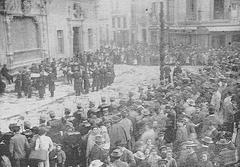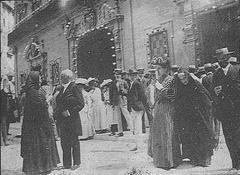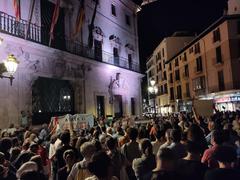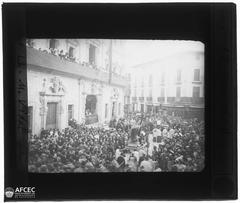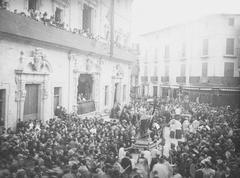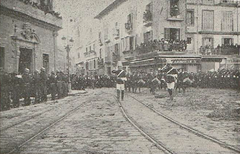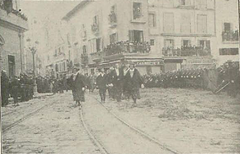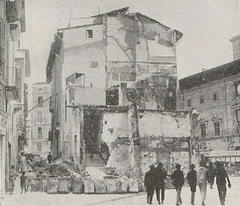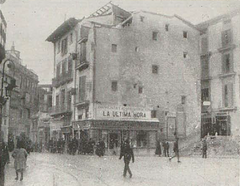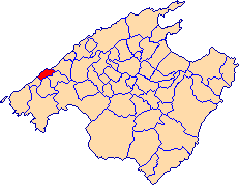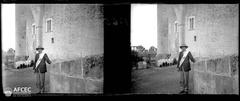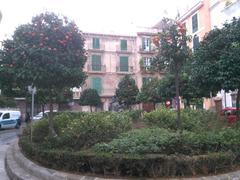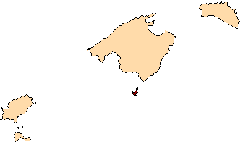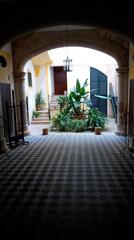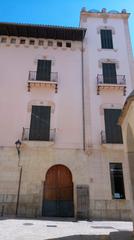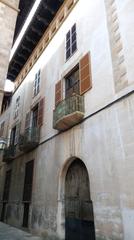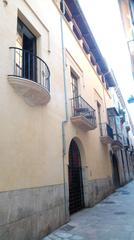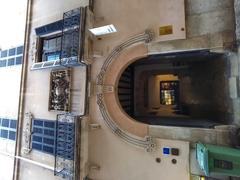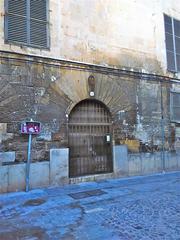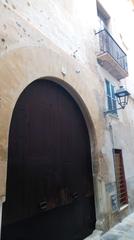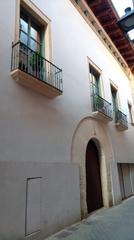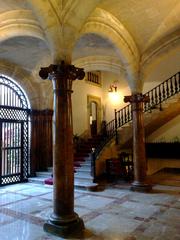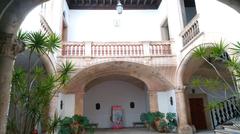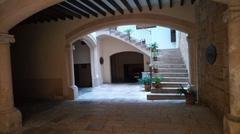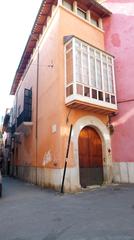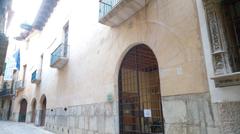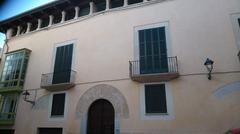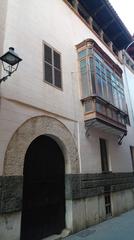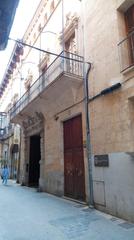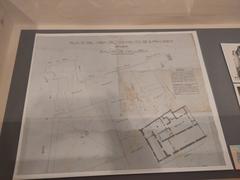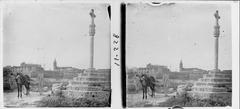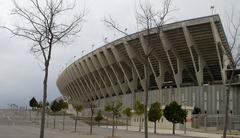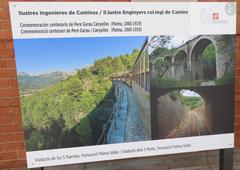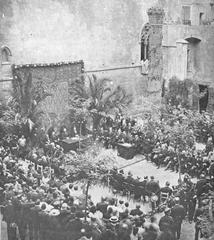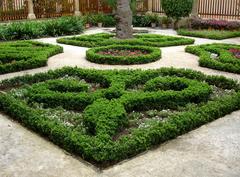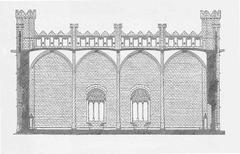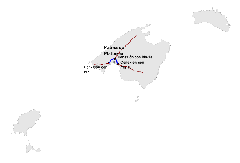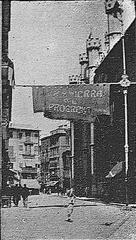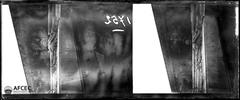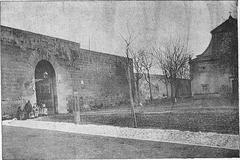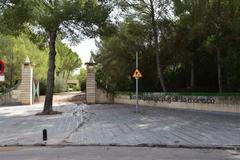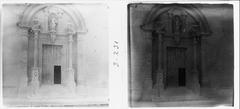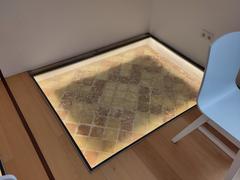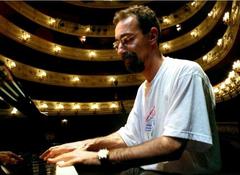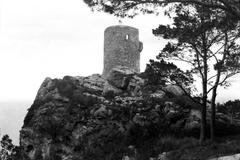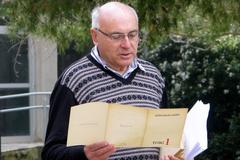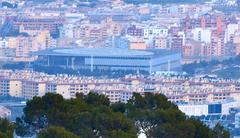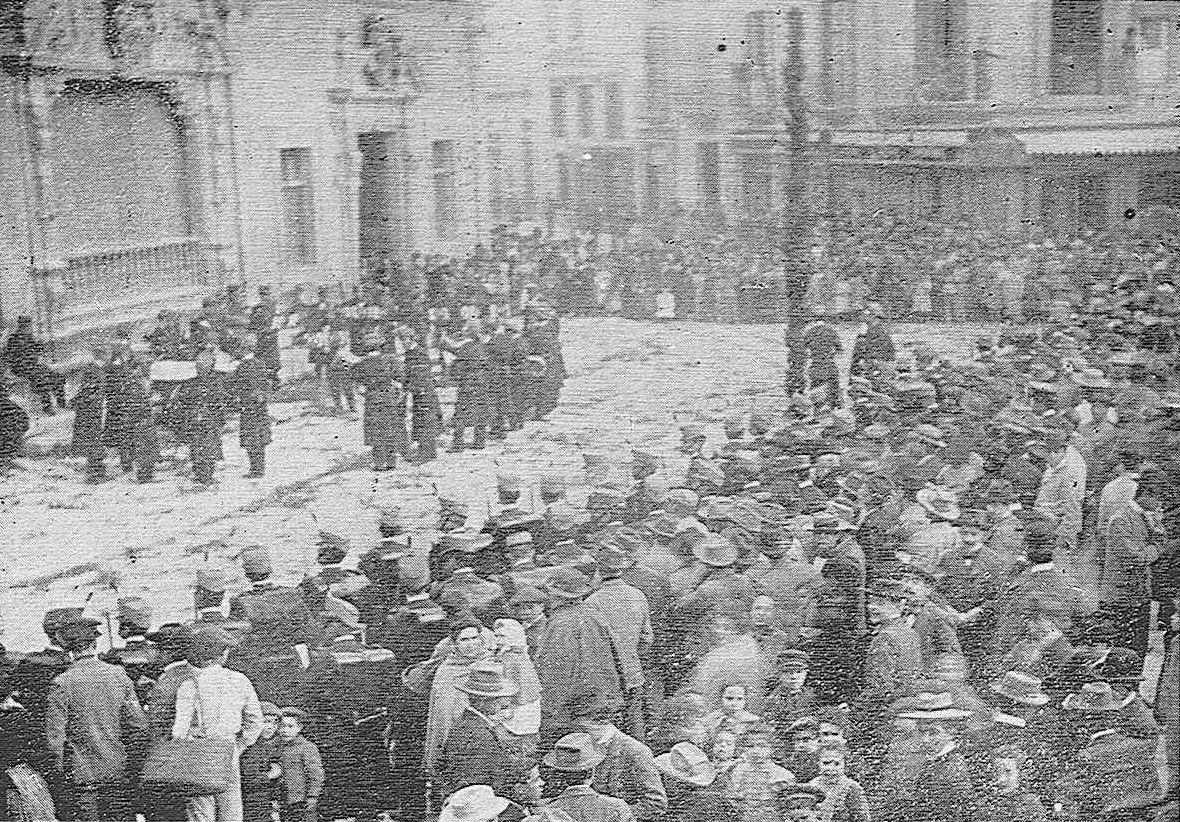
Plaça de Cort Visiting Hours, Tickets, and Tips - Palma de Mallorca Guide
Date: 01/08/2024
Introduction
Welcome to Plaça de Cort, the historical heart of Palma de Mallorca, Spain. This iconic square, steeped in centuries-old traditions and architectural grandeur, beckons visitors from around the globe. Situated in the city’s historic center, Plaça de Cort is more than just a public space; it is a living testament to Palma’s rich cultural tapestry. From its Roman and Arab roots to its transformation under Catalan rule, the square has witnessed the evolution of Palma over the ages (Vivere Maiorca).
The square is most renowned for its Town Hall, a stunning example of Baroque architecture, which has served as the city’s administrative hub since the 17th century. The facade, built in the mid-1600s, is not just an architectural marvel but a symbol of the square’s historical significance (Living Blue Mallorca). Additionally, the ancient olive tree, known as the ‘Olivera de Cort,’ stands as a symbol of peace and adds to the square’s historical ambiance (Nomads Travel Guide).
This guide aims to provide you with everything you need to know about visiting Plaça de Cort, from its rich historical background to practical visitor information, including visiting hours, ticketing details, and nearby attractions. Whether you’re a history enthusiast or a casual traveler, Plaça de Cort offers a unique glimpse into the past and present of Palma de Mallorca.
Table of Contents
- Introduction
- History of Plaça de Cort
- Visitor Information
- Historical Anecdotes
- FAQ Section
- Conclusion
History of Plaça de Cort
Roman and Arab Foundations
Plaça de Cort has a rich history that dates back to the Roman era. Founded by the Romans in 123 B.C., the city of Palma initially had its urban layout within the confines of Roman walls. However, Plaça de Cort was not part of this original Roman urban plan; it was situated outside the city walls, serving as a space for inns, artisan shops, and gates (Vivere Maiorca).
The transformation of Plaça de Cort began in the 10th century when Mallorca was incorporated into the Arab kingdoms, and Palma became known as Madina Mayurqa. The city expanded beyond its Roman walls, necessitating the construction of a second, larger wall that included Plaça de Cort within its boundaries. This expansion marked the beginning of Plaça de Cort’s significance as a commercial hub (Vivere Maiorca).
Catalan Conquest and Medieval Significance
The pivotal moment in the history of Plaça de Cort came with the Catalan conquest of Mallorca in 1229. Following the conquest, the square became the central administrative, commercial, and judicial hub of the city. The establishment of the Kingdom of Mallorca saw the transformation of the old hospital of Sant Andreu, founded in 1232, into the seat of the city’s government. This building later became the property of the state in 1343 when King Pedro IV of Aragon donated it to the city as its institutional headquarters (Vivere Maiorca).
Architectural Evolution
The architectural evolution of Plaça de Cort is marked by the construction of the current façade of the Town Hall in the 17th century. Built in the mid-1600s, the Town Hall’s façade became a focal point of the square, symbolizing its administrative importance. This period also saw the square’s transformation into a bustling commercial center, with ordinances by King James II of Mallorca indicating the presence of warehouses for wood, cotton, silk, and various merchant shops (Living Blue Mallorca).
Modern Developments
The 19th century brought significant changes to Plaça de Cort and the city of Palma. In 1831, the medieval city’s morphology, constrained by overpopulation, led to the demolition of the old walls and the urban expansion of Palma. Despite these changes, the essential character of Plaça de Cort remained intact, continuing to serve as a central administrative and cultural space (Vivere Maiorca).
Cultural and Administrative Hub
Today, Plaça de Cort remains a vital part of Palma’s cultural and administrative landscape. The square is home to the historic Town Hall, a building that not only serves administrative functions but also stands as a testament to the city’s rich history. The Town Hall is open for guided tours, allowing visitors to explore its historical and architectural significance (Vivere Maiorca).
Visitor Information
Visiting Hours and Tickets
Plaça de Cort is accessible to visitors throughout the year. While the square itself is open 24/7, the Town Hall has specific visiting hours. Guided tours are available once a day at 12:00 PM and must be booked through the official Town Hall website. These tours are free of charge, providing an in-depth look at the square’s history and its role in Palma’s development.
Access and Transportation
Plaça de Cort is located in the historic center of Palma, making it easily accessible on foot. Visitors are advised to avoid driving to the square, as only residents are permitted to do so. Instead, there are several underground parking facilities nearby, such as the one under Plaza Mayor, which is just a short walk from Plaça de Cort. For those planning to visit the Cathedral, there is also parking available beneath La Seu (Vivere Maiorca).
Nearby Attractions
Plaça de Cort is surrounded by several notable attractions that are worth exploring. Visitors can stroll through the narrow streets behind the ancient olive tree, delving into the old Jewish quarter of Palma. Nearby, the esoteric church of Santa Eulalia, the Parliament building, and the neo-Gothic palace of the Insular Government of Mallorca offer additional historical and architectural insights. Other nearby landmarks include Plaza Mayor, the Arab Baths, and the noble palaces of Palma from the 1600s (Vivere Maiorca).
Travel Tips
To fully appreciate the historical significance of Plaça de Cort, guided tours are highly recommended. These tours are available only once a day at 12:00 PM and must be booked through the official website of the Town Hall. The tours are free of charge and provide an in-depth look at the square’s history and its role in Palma’s development (Vivere Maiorca).
Historical Anecdotes
One of the intriguing aspects of Plaça de Cort is the presence of a centuries-old olive tree, known as the “Olivera de Cort,” which is considered a symbol of peace. This tree adds to the square’s historical ambiance and serves as a reminder of the city’s long-standing traditions (Living Blue Mallorca).
Another fascinating detail is the legend of an old woman who is said to observe passersby from the Town Hall. This anecdote adds a touch of mystery and charm to the square, inviting visitors to look closely and discover the hidden stories embedded in its history (Vivere Maiorca).
FAQ Section
Q: What are the visiting hours for Plaça de Cort? A: The square is open 24/7, but guided tours of the Town Hall are available once a day at 12:00 PM.
Q: How can I book a guided tour of the Town Hall? A: Guided tours can be booked through the official Town Hall website and are free of charge.
Q: Is there parking available near Plaça de Cort? A: Yes, there are several underground parking facilities nearby, including Plaza Mayor and beneath La Seu Cathedral.
Q: What nearby attractions can I visit? A: Nearby attractions include the old Jewish quarter, the church of Santa Eulalia, the Parliament building, the neo-Gothic palace of the Insular Government of Mallorca, Plaza Mayor, the Arab Baths, and the noble palaces of Palma from the 1600s.
Conclusion
Plaça de Cort stands as a testament to Palma de Mallorca’s rich historical tapestry. From its Roman and Arab foundations to its role as a medieval commercial and administrative hub, the square encapsulates the city’s evolution over centuries. Today, it continues to be a vibrant cultural and administrative center, offering visitors a glimpse into Palma’s storied past. Whether exploring its architectural landmarks, participating in guided tours, or simply soaking in the historical ambiance, Plaça de Cort provides a memorable experience for all who visit. Be sure to check out our other articles on Palma’s historical sites and follow us on social media for the latest updates.
References
- Vivere Maiorca, 2023, Vivere Maiorca
- Living Blue Mallorca, 2023, Living Blue Mallorca
- Nomads Travel Guide, 2023, Nomads Travel Guide
- Travellers Worldwide, 2023, Travellers Worldwide
- Salt in Our Hair, 2023, Salt in Our Hair
